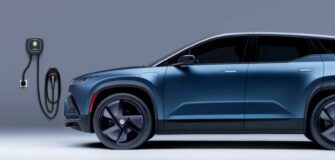Global Car Sales Update: Navigating the Current Automotive Market Landscape

The global car industry is in a state of constant flux, influenced by economic conditions, technological innovations, and shifting consumer preferences. As we delve into the current market scenario, it’s evident that several trends and factors are shaping the trajectory of car sales worldwide. Let’s explore the insights that provide a comprehensive overview of the global car sales landscape:
1. Recovery and Resilience Post-Pandemic:
The COVID-19 pandemic had a profound impact on car sales, causing disruptions in production, supply chains, and consumer demand. As economies gradually recover, the automotive industry is witnessing a rebound in sales. Governments’ stimulus measures, pent-up demand, and the need for personal transportation options are contributing to the sector’s resurgence.
2. Electric Vehicle (EV) Surge:
Electric vehicles are gaining traction globally as countries commit to reducing carbon emissions. EV sales are rising as automakers invest heavily in developing eco-friendly options. Supportive policies, including subsidies and charging infrastructure expansion, are propelling EV adoption. The shift towards cleaner mobility is reshaping the competitive landscape and encouraging innovation in the industry.
3. Demand for SUVs and Crossovers:
Consumers’ preference for SUVs and crossovers continues to be a driving force behind car sales trends. These versatile vehicles offer ample space, elevated driving positions, and a blend of functionality and style. Automakers are responding by expanding their SUV and crossover lineups to cater to this demand.
4. Supply Chain Challenges and Semiconductor Shortages:
Despite recovering demand, the automotive industry is grappling with supply chain disruptions, particularly the global shortage of semiconductors. These microchips are crucial components for various vehicle systems, including infotainment, safety, and powertrain. The shortage has led to production delays and impacted car sales in many regions.
5. Digital Transformation and Online Sales:
The digital revolution is reshaping the way cars are bought and sold. Online platforms, virtual showrooms, and digital financing options have become integral to the car buying process. Consumers now have the convenience of researching, customizing, and even purchasing vehicles from the comfort of their homes.
6. Mobility Shifts and Shared Services:
Urbanization and environmental concerns are prompting a shift towards shared mobility and alternative transportation solutions. Ride-sharing services and car subscription models are gaining popularity, especially among younger demographics. This change in mobility preferences is influencing car purchasing decisions and prompting automakers to adapt.
7. Regional Variations and Emerging Markets:
Car sales trends vary significantly across regions and markets. While mature markets experience steady growth and evolution, emerging markets present unique opportunities and challenges. Economic growth, changing demographics, and regulatory developments shape the demand for vehicles in these regions.
8. Focus on Safety and Advanced Driver Assistance Systems (ADAS):
Safety remains a top priority for car buyers. Advanced Driver Assistance Systems (ADAS), such as adaptive cruise control, lane departure warning, and automated emergency braking, are becoming standard features in many new vehicles. These technologies enhance driver safety and are driving consumer interest.
In conclusion
The global car sales landscape is dynamic and influenced by a multitude of factors. The recovery from the pandemic, the surge in electric vehicles, supply chain challenges, digital transformation, shifting mobility preferences, regional variations, and safety advancements are all playing a pivotal role. As the automotive industry navigates these trends, adaptability and innovation will be key for automakers, dealers, and consumers alike. The ever-changing nature of the market underscores the importance of staying informed and agile in an era of transformative change.









